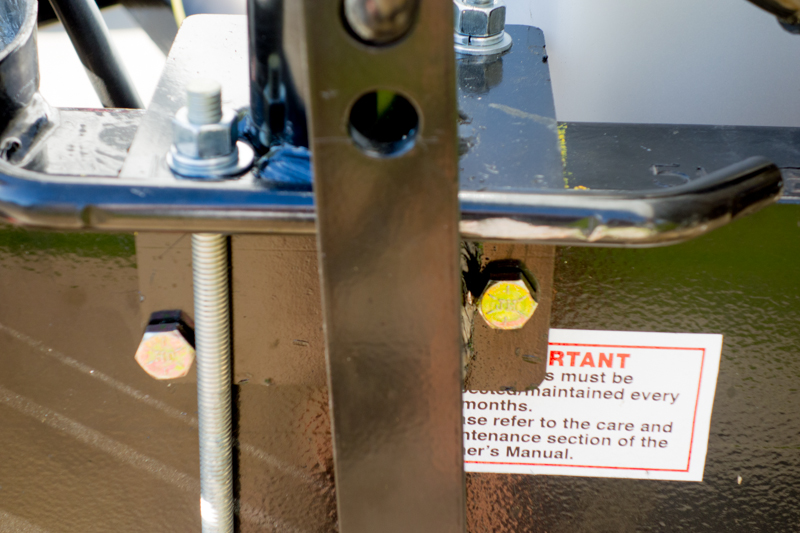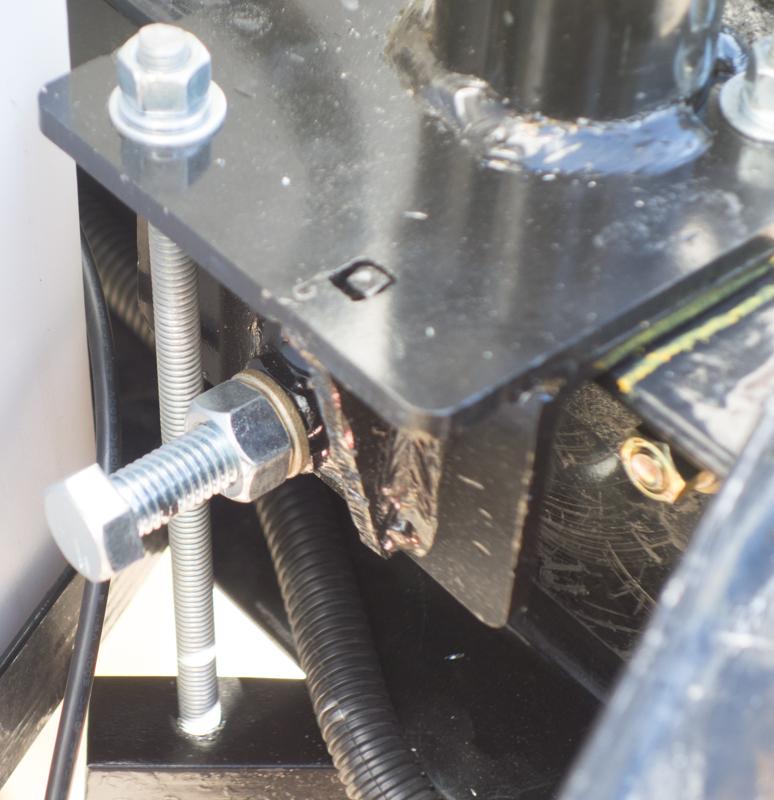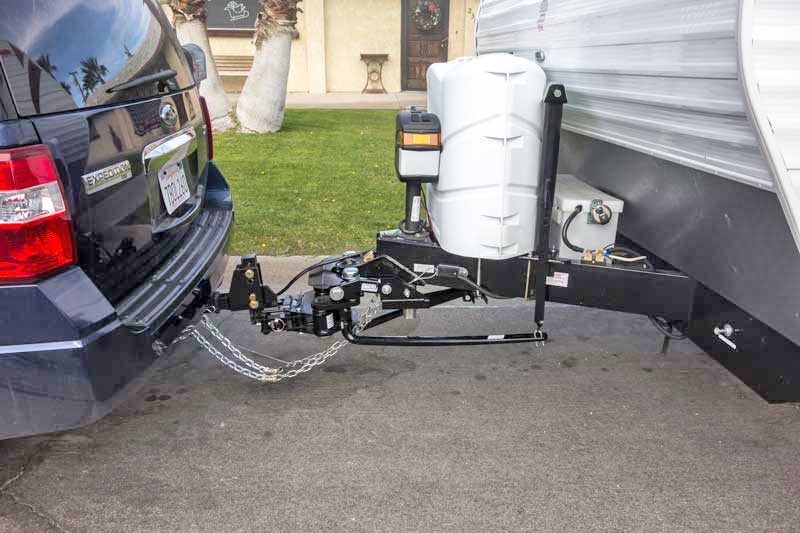
I discussed the installation of our ProPride hitch in the post, How much trailer can you tow — part 3.
We have now towed our trailer over 1,000 miles with the ProPride hitch. This has included driving in sustained 30 MPH crosswinds, some freeway travel, and several trips, most of which are around 100 miles round trip. One trip was 450 miles. We also have been subjected to big rigs passing us at high speeds. With all of this in mind, I thought I would share my impressions.
Overall I like the ProPride, or more exactly it is, by far, the best towing experience I have had. I have zero regrets in purchasing it. However, I want to address some misconceptions that have been stated by users over the years.
First, the ProPride is not a solution for the basic problem of too heavy a trailer for the tow vehicle. It will not solve problems for excessive tongue weight or a combined Combined Gross Vehicle Weight that exceeds the manufacturer’s rating for a trailer and truck combination. We are within all specifications for our trailer, the tow vehicle, and both combined.
There are other anti-sway and weight distribution systems on the market that work. My experience with the Equal-i-zer system is that it did indeed control sway and did a good job of distributing tongue weight to our tow vehicles — but the ProPride does it much better — it is easier to set up for weight distribution and it eliminates sway.
I have read many ProPride owners claim that they do not notice the trailer at all when using this device. Sorry, but you will notice and know you are towing a 8,400 pound trailer with any solution, including the ProPride. The ProPride does minimize this better than both of my Equaliz-i-zer units, and I am confident it does it better than those made by Reese and other manufacturers.
It does eliminate sway, which is different than controlling sway, as the competing products do. But with the ProPride you do feel side winds buffeting the trailer-truck combination — a similar feeling we get when we drive our Ford Expedition without the trailer. Gusts of strong winds will push the combination, but it pushes both the trailer and SUV together as an integrated unit with little steering correction needed, in contrast to the constant correction needed with a sway control product where the rear of the trailer is moving back and forth with side wind or passing semi-trucks. The ProPride does indeed eliminate sway, which is a completely different solution or feeling using a sway control product.
Where the ProPride truly shines is connecting and disconnecting the trailer to our Expedition. After a little practice, and understanding the impact of the ProPride’s angle to the ground, hitching and unhitching only takes a minute or two. It is so easy and quick that, for me, this is the best feature of the unit — even though it’s weight distribution component is quicker and easier to use than other brands, and it truly does eliminates sway.
ProPride Problems
I had one problem with the ProPride unit — the weight distribution jacks. I should mention that the ProPride is made in the United States; except for two components. The first is the weight distribution bars, which like almost every spring bar, is made in China. There have been no problems with the spring bars. The weight distribution jacks are made by BAL Industries, and these are a “one size fits all” solution.
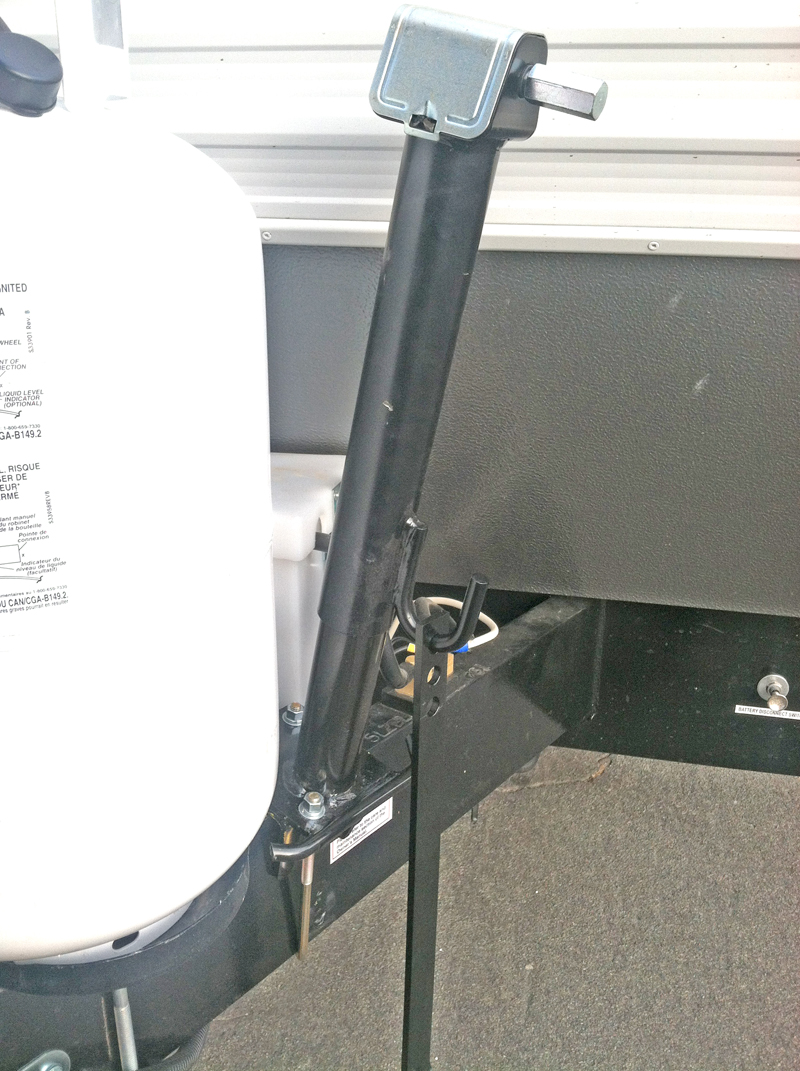
A couple days after the installation I had problems with both jacks, on a pre-trip road test. The base of the jacks straddle the trailer’s tongue frame and must be wide enough to fit a multitude of trailers. To secure and tighten the jack’s base frame against trailer frame, a 1/2 inch diameter bolt is used as a “set screw” type of affair. Because our frame is a C-Channel construction versus a much wider tube frame, the set-bolt must reach a long distance. Any minor distortion will cause the bolt to move and eventually or even quickly cause the jack assembly to tilt.
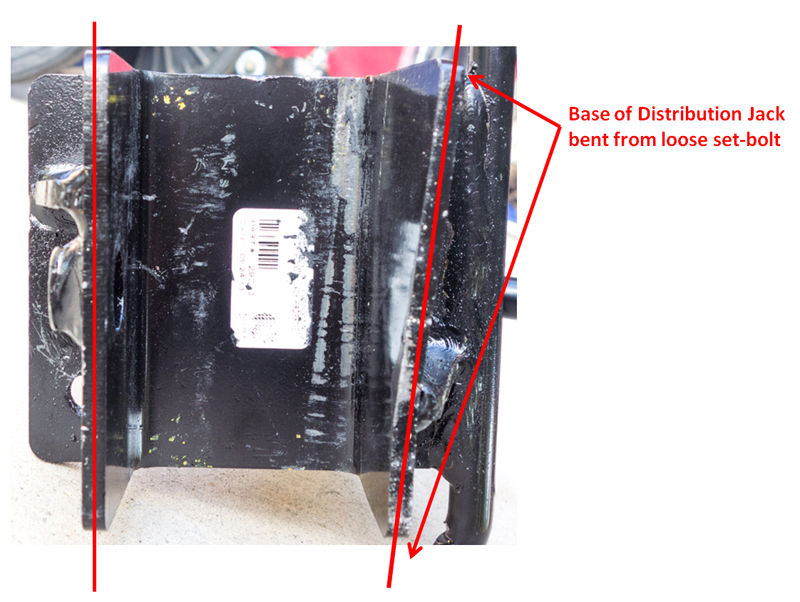 When the jacks tilted outward, the outboard side of the jack frames were bent. To better understand how the jacks attach to the trailer tongue frame, view the diagram below. This is a rough diagram of the bolt-on solution. It does not show the lock nuts used on the long “set” bolt.
When the jacks tilted outward, the outboard side of the jack frames were bent. To better understand how the jacks attach to the trailer tongue frame, view the diagram below. This is a rough diagram of the bolt-on solution. It does not show the lock nuts used on the long “set” bolt.
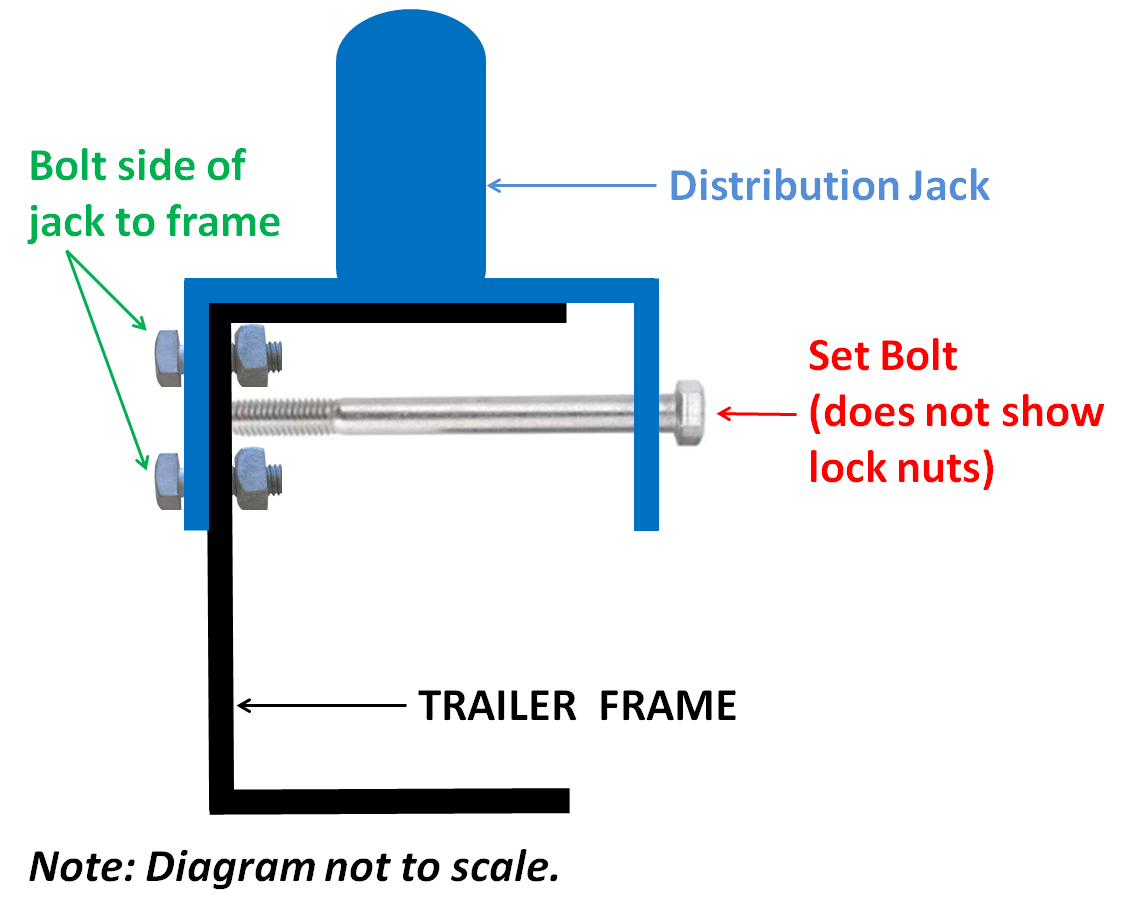 The best solution for me was to bolt the side of the jack directly to the side of the tongue frame, opposite the set-bolt side. I really didn’t want to drill holes into the trailer frame, although doing so isn’t going to weaken it. But I wanted a solution that would be permanent and with no chance of slippage when traveling.
The best solution for me was to bolt the side of the jack directly to the side of the tongue frame, opposite the set-bolt side. I really didn’t want to drill holes into the trailer frame, although doing so isn’t going to weaken it. But I wanted a solution that would be permanent and with no chance of slippage when traveling.
Above: The WD Jack is bolted to the C-channel frame. To make sure there was no flex in the frame, I added a piece of 1/2″ steel to the back side of the frame where the set bolt sits on the frame.
Above: The “set” bolt which is threaded through the WD Jack.
Above: this shows the lock nuts I used to secure the “Set” bolt from moving under stress. It might seem like overkill, but it has eliminated all the problems with the Weight Distribution Jacks.
- This the 1/2″ Steel plate I added to the back of the C-channel frame.
- I used a large flat nut against the frame so there is a larger area for the Set bolt to push against the frame, than just the diameter of the bolt.
- Lock washer
- Lock nut completes the hardware at the end to the bolt.
- Lock nut and washer on the inside of the WD jack frame.
- WD Jack frame which straddles the trailer tongue frame.
- Lock nut and washer on the outside of the WD jack frame.
The solution has been flawless for over 1,000 miles.
